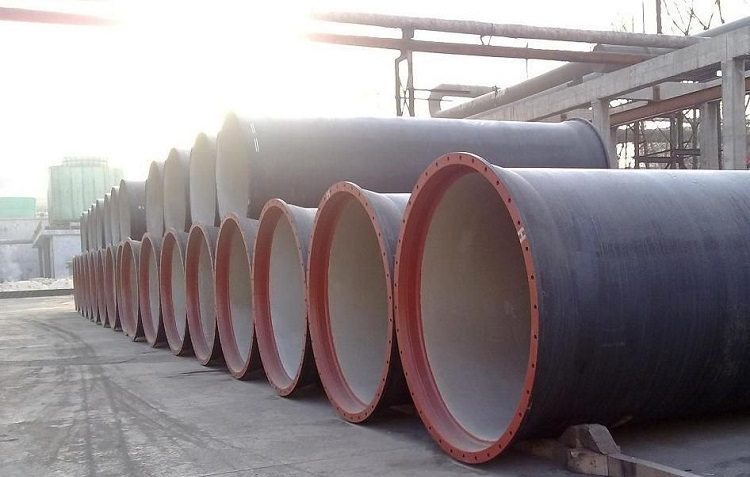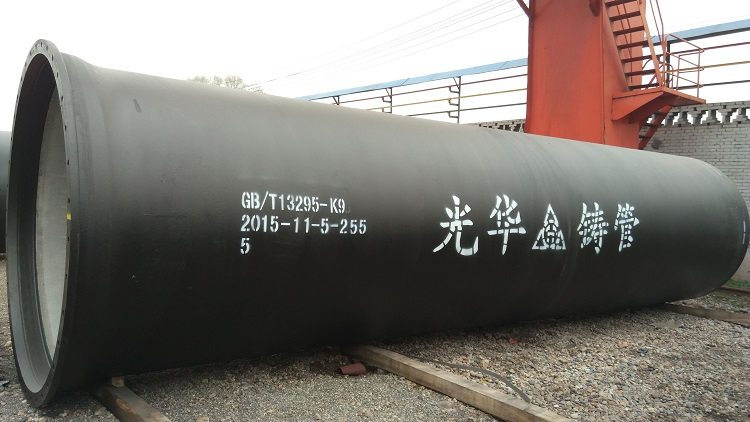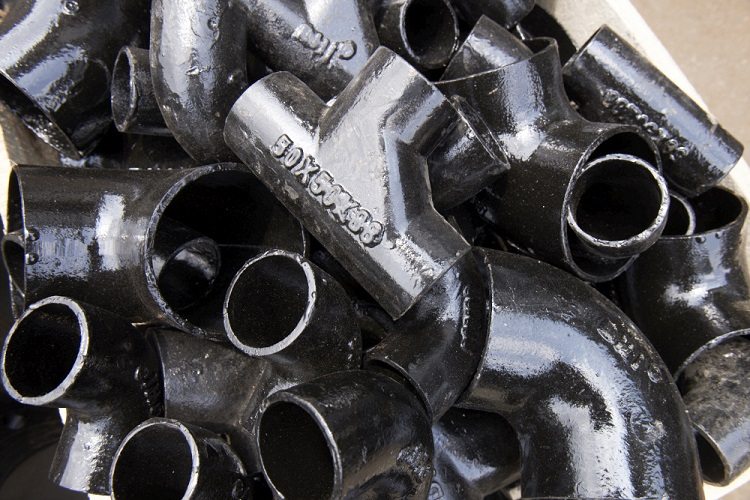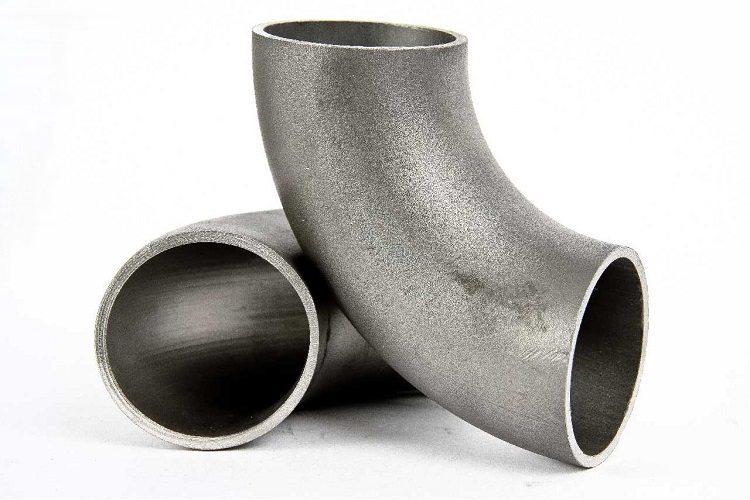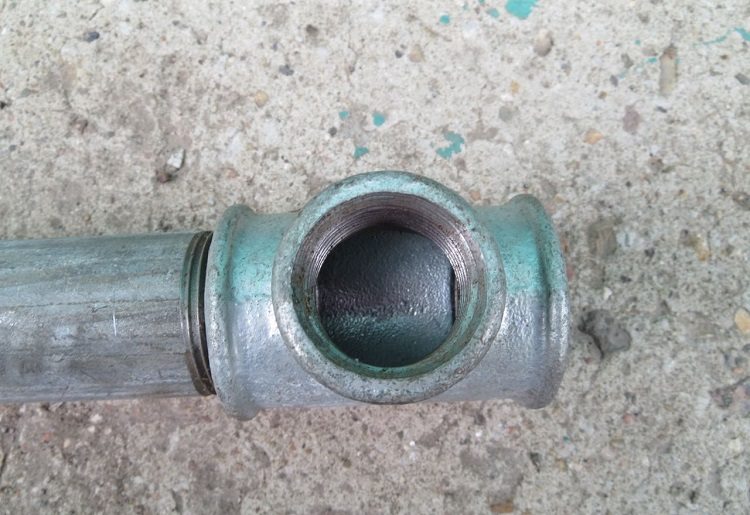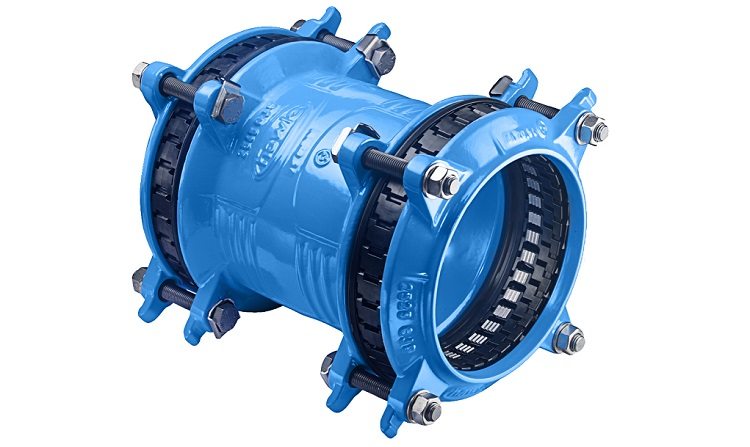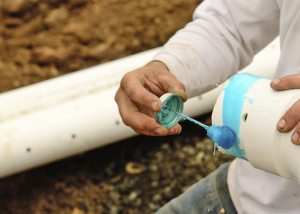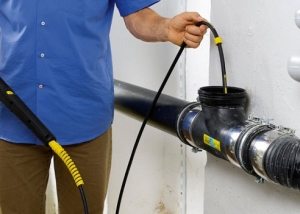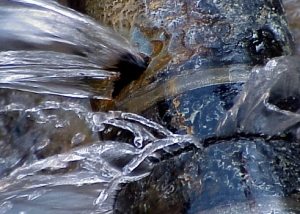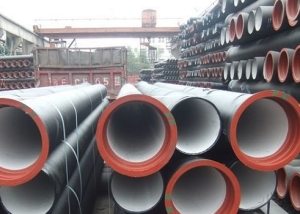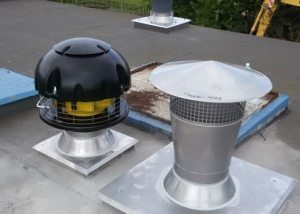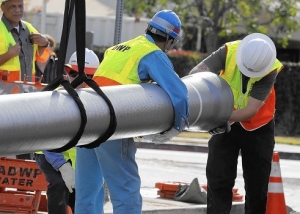Standard 6942-98 applies to sewer communications made of cast iron and fittings for them, which are intended for internal systems. The document presents a range of products, their types, sizes and designs, technical requirements, control methods and acceptance rules, as well as requirements for transportation and storage of products. In addition, GOST 6942 contains some instructions for the operation and installation of cast iron pipes.
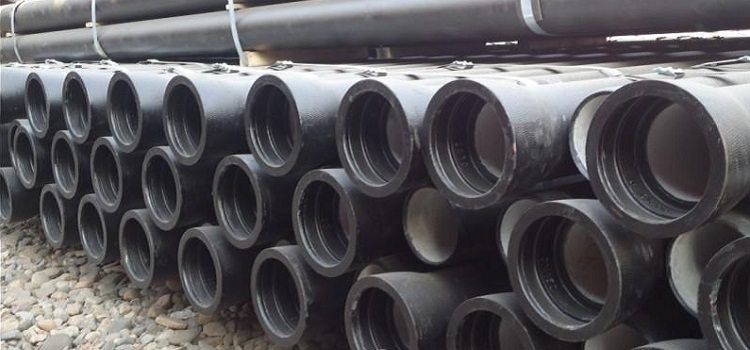
Cast iron pipes have been used for sewage for decades, there are varieties of these products for indoor and outdoor systems
Content
- 1 Cast Iron Properties
- 2 Technical characteristics of cast iron products
- 3 Cast iron pipe classes
- 4 Disadvantages and advantages of products
- 5 Requirements for pipes and fittings
- 6 Acceptance rules and product labeling
- 7 Product Inspection Mechanisms
- 8 Conducting a leak test of products
- 9 Sizes of a pig-iron pipe and a bell
- 10 Branch pipe sizes
- 11 Cast iron elbow and its characteristics
- 12 Bends and indents: their parameters
- 13 Features of cast iron tee
- 14 Characteristics of crosses
- 15 Couplings and other elements of standard 6942 and their parameters
Cast Iron Properties
Cast iron is an alloy of iron that is characterized by a high content of carbon forms. The amount and form of carbon (cementite, graphite) determine the production of different types of cast iron: gray, white, malleable, and high strength. In white cast iron, carbon is bound, in gray - lamellar graphite, in high-strength - spherical graphite, in malleable - flaky graphite.
The 6942 standard describes the characteristics of pipes and fittings for sewage made of cast iron. This material is environmentally friendly and has excellent anti-corrosion properties. Spheroidal graphite is included in cast iron for the production of pipeline parts. It significantly improves the anti-corrosion parameters and the degree of wear of structures, which greatly saves resources and money.
Cast iron is characterized by low crystallization temperatures, excellent fluidity in the molten form and a low coefficient of shrinkage. The most common way to produce pipes from this material is through casting. Such a process provides products with uniform wall thicknesses, savings in the consumption of raw materials and the necessary density of the material.
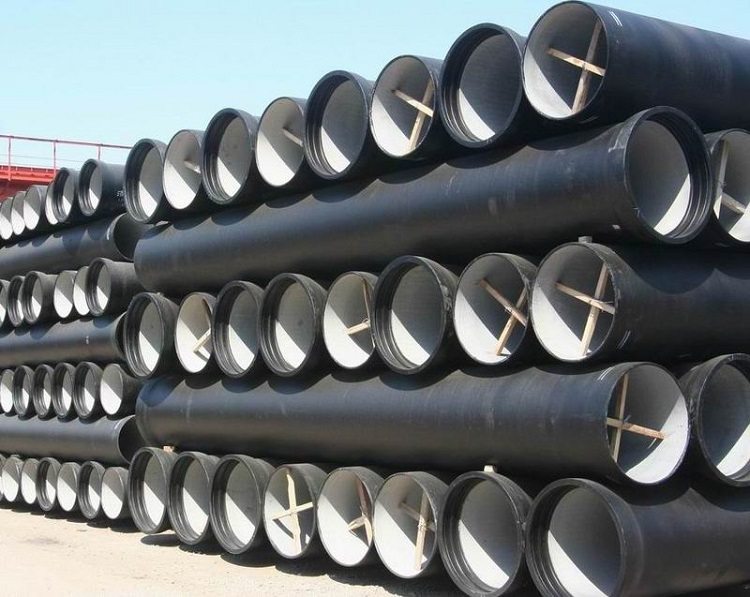
Modern pipes have a smooth inner coating that facilitates easy passage of sewage through the pipeline
According to GOST 6942-98, cast-iron sewer pipes are coated with an anti-corrosion layer, which makes their inner surface smoother and, therefore, reduces the coefficient of friction and leads to an increase in the fluidity of effluents.
Technical characteristics of cast iron products
Cast iron has good technical indicators, which include:
- high strength;
- wear resistance;
- corrosion resistance;
- soundproof properties;
- ductility in molding and molding;
- low coefficient of thermal expansion;
- incombustibility and fire safety;
- lack of release of toxic substances.
The release of a cast-iron sewer pipe (GOST 6942-98) is made with various diameters, weight, wall thicknesses, length. Distinguish between the nominal, outer diameter and value of the catch passage. The most important indicator is the nominal diameter, which is often oriented during the selection and installation of the sewer network.The rounded or conditional value of the inner diameter indicates the conditional passage of the pipe.
Note! The amount and load of wastewater affects the selection of a suitable product.
The diameters of cast iron pipes for sewage range from 5 to 15 cm. The internal system can be built on communications from 5 to 10 cm, the external one is above 10-15 cm.
The internal system includes different types of plumbing, piping risers. With the accumulation and increase of drains, the diameter of the pipes increases to 50-120 cm.
Cast iron pipe classes
Exerted loads and pressure on the walls cast iron sewer pipe determines its assignment to a particular class. So, class A, B and LA are distinguished. Class A parameters are listed in the table.
Table 1
| Conditional pass, cm | Meters per ton | Mass of product meter, kg | Wall thickness, cm | Outer diameter cm |
| 6,5 | 80,65 | 12,4 | 0,74 | 8,1 |
| 8,0 | 61,73 | 16,2 | 0,79 | 9,8 |
| 10,0 | 48,08 | 20,8 | 0,83 | 11,8 |
| 12,5 | 37,31 | 26,8 | 0,89 | 14,4 |
| 15,0 | 29,67 | 33,7 | 0,92 | 17,0 |
| 20,0 | 20,49 | 48,8 | 1,01 | 22,2 |
| 26,0 | 15,17 | 85,9 | 1,10 | 27,4 |
| 30,0 | 11,74 | 85,2 | 1,19 | 32,6 |
| 35,0 | 9,39 | 106,5 | 1,28 | 37,8 |
| 40,0 | 7,66 | 130,5 | 1,38 | 42,9 |
| 50,0 | 5,45 | 183,5 | 1,56 | 53,2 |
| 60,0 | 4,08 | 244,8 | 1,74 | 63,5 |
| 70,0 | 3,16 | 316,0 | 1,93 | 73,8 |
| 80,0 | 2,63 | 384,6 | 2,11 | 84,2 |
| 90,0 | 2,08 | 380,9 | 2,23 | 94,5 |
| 100,0 | 1,73 | 578,0 | 2,48 | 104,8 |
Such pipes withstand a pressure value of 100 kPa. They are used for the most important areas of indoor or outdoor sewers.
Class B parameters are given in the table.
table 2
| Conditional pass, cm | Meters per ton | Mass meter, kg | Wall thickness, cm | Outer diameter cm |
| 6,5 | 75,19 | 13,3 | 0,80 | 8,1 |
| 8,0 | 57,14 | 17,5 | 0,86 | 9,8 |
| 10,0 | 44,84 | 22,3 | 0,90 | 11,8 |
| 12,5 | 34,36 | 29,1 | 0,95 | 14,4 |
| 15,0 | 27,47 | 36,4 | 1,00 | 17,0 |
| 20,0 | 18,90 | 52,9 | 1,10 | 22,2 |
| 26,0 | 13,97 | 71,6 | 1,20 | 27,4 |
| 30,0 | 10,79 | 92,7 | 1,30 | 32,6 |
| 35,0 | 8,61 | 116,1 | 1,40 | 37,8 |
| 40,0 | 7,07 | 141,4 | 1,50 | 42,9 |
| 50,0 | 5,02 | 199,4 | 1,70 | 53,2 |
| 60,0 | 3,75 | 266,6 | 1,90 | 63,5 |
| 70,0 | 2,92 | 342,9 | 2,10 | 73,8 |
| 80,0 | 2,33 | 429,0 | 2,30 | 84,2 |
| 90,0 | 1,91 | 523,9 | 2,50 | 94,5 |
| 100,0 | 1,59 | 627,9 | 2,70 | 104,8 |
Pipes of this class have the largest wall thickness, have good strength, withstand pressure values of 100 kPa.
Characteristics of cast iron pipes of class LA are given in the table.
Table 3
| Conditional pass, cm | Meters per ton | Mass of product meter, kg | Wall thickness, cm | Outer diameter cm |
| 6,5 | 88,50 | 11,3 | 0,67 | 8,1 |
| 8,0 | 67,11 | 14,9 | 0,72 | 9,8 |
| 10,0 | 52,91 | 18,9 | 0,75 | 11,8 |
| 12,5 | 40,82 | 24,5 | 0,79 | 14,4 |
| 15,0 | 32,79 | 30,5 | 0,83 | 17,0 |
| 20,0 | 22,42 | 44,6 | 0,92 | 22,2 |
| 26,0 | 16,64 | 60,1 | 1,00 | 27,4 |
| 30,0 | 12,69 | 77,6 | 1,08 | 32,6 |
| 35,0 | 10,25 | 97,6 | 1,17 | 37,8 |
| 40,0 | 8,44 | 118,5 | 1,25 | 42,9 |
| 50,0 | 5,97 | 167,5 | 1,42 | 53,2 |
| 60,0 | 4,49 | 222,9 | 1,58 | 63,5 |
| 70,0 | 3,48 | 287,2 | 1,75 | 73,8 |
| 80,0 | 2,78 | 359,8 | 1,92 | 84,2 |
| 90,0 | 2,28 | 437,8 | 2,06 | 94,5 |
| 100,0 | 1,90 | 525,6 | 2,25 | 104,8 |
Disadvantages and advantages of products
The disadvantages of cast-iron pipes and fittings for them include their heavy weight, which requires significant efforts when laying a sewage pipeline.
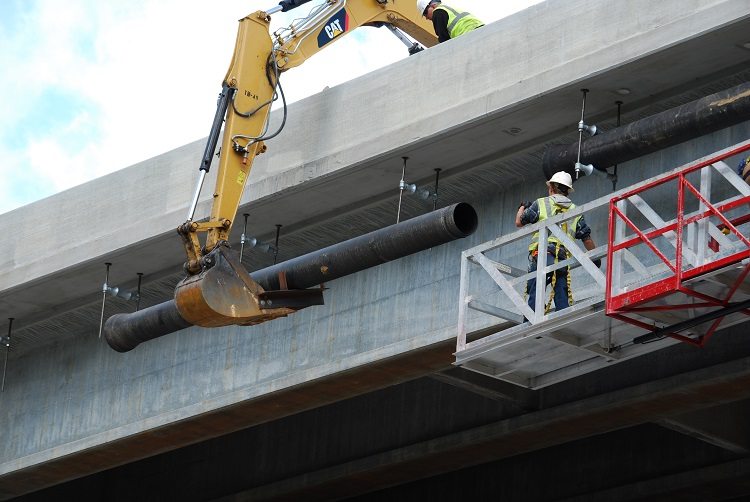
One of the drawbacks of cast-iron pipes is their heavy weight, so transportation and installation often require the use of equipment
The process of connecting such communications is also very labor intensive. It takes longer to lay than for a similar process with products from other materials.
Note! For the installation of outdoor sewage networks, it is often necessary to involve special equipment so that installation work is carried out in full accordance with the rules and regulations.
However, cast iron products have many advantages. They have a sufficiently high strength due to the characteristics of casting and alloy. Reliable work is guaranteed for more than a dozen years. The lowest operational terms of such communications are 40 years, the highest are 80-100 years.
Neither sharp jumps in temperature nor its highest values worsen the parameters of cast-iron pipes. Corrosion-resistant coating reliably protects products from the aggressive effects of effluents, rust and deposits. They have high fire safety and a relatively low cost.
Requirements for pipes and fittings
Pig-iron sewer communications and shaped elements for them should be free of defects that could impair their operational and installation qualities: growths, bays, metal drops, and deposits on the inner and outer surfaces. If there are minor defects that are caused by the production method and do not reduce the quality of the product, then their elimination is allowed.
The cast-iron pipe should not have bleached with a depth of more than 1 mm over the entire outer surface. On shaped elements in places where molds are molded (foundry), 6 cm from the end, on the outside of the smooth ends of the products and ends - more than 2 mm deep. Bleaching is a defect in casting in the form of hard and hard to machine places.
Note! The permissible deviation of the building length according to document 6942 is 0.9%.
For nominal values of the internal diameters of the sockets of shaped elements and pipes, as well as the external diameters of the smooth ends of the products and the shanks of the shaped elements, the permissible deviation is 2 mm.
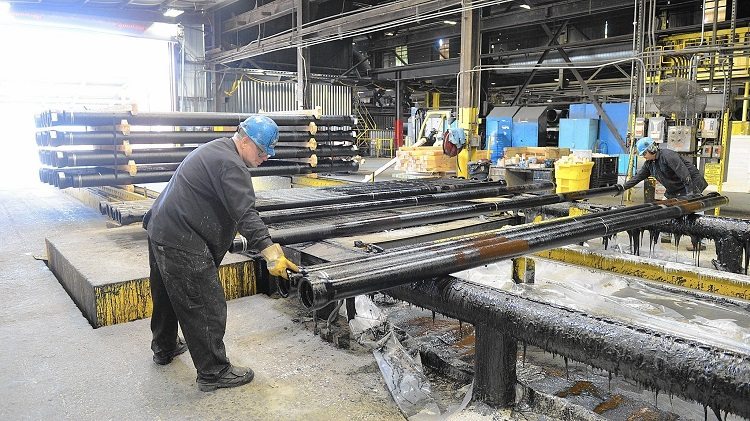
Pipe production is carried out in accordance with GOST and finished pipes are checked for compliance with various parameters specified in this document
Smooth pipe ends on a length of up to 15 cm and shanks of shaped elements on a length of up to 7 cm from the ends can be thickened no more than 2 mm. Moreover, in such places, the inner diameter of the products should be reduced.
When calculating the mass of cast-iron sewer pipes (GOST 6942-98), the density of cast iron is 7.1 g / cm3. If the product meets all the quality characteristics of GOST, but its mass exceeds the maximum, then it is considered suitable. For pipes with a nominal passage of 10 and 15 cm, the deviation from straightness should be less than 2 mm per meter of length, and with a passage of 5 cm - 5 mm per meter of length. After applying an anticorrosion coating on the outer and inner sides of the pipes and fittings, they must withstand a hydraulic pressure of at least 100 kPa.
Acceptance rules and product labeling
The raw material for the manufacture of pipes and fittings is gray cast iron with the addition of plate graphite, corresponding to GOST 1412. Casting is performed according to GOST 26358. The products must be coated with an anti-corrosion coating on the inside and outside, which have a softening temperature of at least 60 ° C (333 K).
Marking of pipes and fittings is applied with indelible paint. It includes:
- manufacturer’s trademark or its name;
- reference designation of products;
- performance standard.
Products are tested for compliance with the following requirements:
- In terms of presence, bleached: half a percent of products from the total batch.
- 100% of batch products must not be defective and have a suitable type of anti-corrosion coating.
- In terms of deviations from dimensions (nominal), wall thickness, mass, straightness, withstand pressure and stickiness of the anti-corrosion coating: at least 2% of the products from the entire batch.
The composition should be applied in a continuous, smooth, non-sticky, strong layer, without bubbles and cracks.
Product Inspection Mechanisms
Determining the magnitude of the straightness of the cast-iron sewer pipe (GOST 6942-98) is carried out using a caliper corresponding to GOST 164, a horizontal control plate and two steel prismatic supports of the same height.
Prismatic supports are mounted parallel to each other on the horizontal control plate. The distance between them should be more than half the length of the product to be checked. A pipe is laid down on the supports with a downward deflection. Using a caliper, the distance from the plane of the plate to the lower point of the cast-iron pipe is measured with an accuracy of one tenth of a millimeter in the place where the deflection is greatest.
The deviation from the straightness of the product per 1 meter of its length (Δ) is calculated by the formula:
Δ = (b-c) / d
In the expression b is the height of the support in millimeters; c is the distance from the plate plane to the bottom of the pipe in millimeters; d is the distance between the supports (in m).
The softening temperature of the anti-corrosion layer is checked in accordance with GOST 11506. Its adhesion to the pipe metal is checked by applying cuts in the form of a mesh to the coating using a knife blade. The distance between the grid lines is at least 40 mm.
Note! With a quality coating, notches will not peel off.
The stickiness test of the anticorrosion layer is carried out at a temperature of 15-30 ° С by pressing a clean sheet of paper (writing) to the pipe coating in accordance with GOST 18510. A layer is considered non-sticky if there are no traces of coating on the paper after it has been removed. Such a check is carried out no earlier than one day after applying the anticorrosive layer to the product.
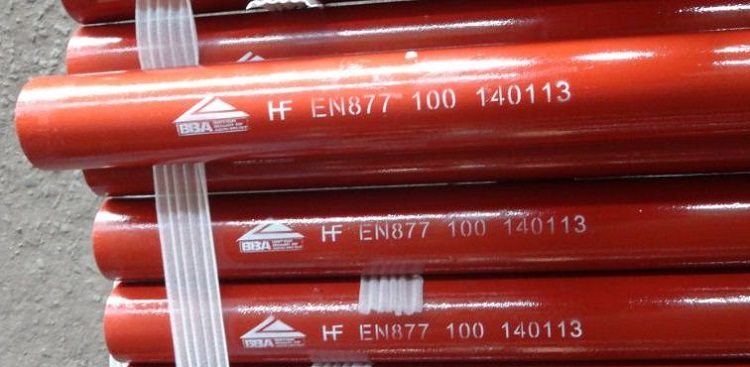
The outer colored coating of the pipes is a corrosion protection; the layer of this protection is also checked for damage.
Conducting a leak test of products
To check the tightness of shaped elements and pipes according to document 6942-98, a stand, pump and plugs (with pipe and blind) are required. The stand is equipped with a manometer, the division price of which is not coarser than 10 kPa. The pump should create a hydraulic pressure of 0.2 MPa.
Shaped elements and sewer pipes are located on the stand. A plug with a nozzle is installed on the hole that is closest to the pump, which ensures connection with it. A plug with a nozzle is installed on another hole to drain the water. If there are other holes, blind plugs are installed on them.
Using the pump, the test section is filled with water, blocked by a valve or other locking mechanism, a pipe for draining water and a pressure of at least 100 kPa is created in it. Maintaining such pressure lasts at least 15 s. During this time, the connections of the pipeline section are inspected.
If there is no leakage of water through the bell-shaped connections and the walls of the pipeline, as well as fogging of the outer surfaces of the fittings and pipes, then the section that is checked is considered leakproof.
Sizes of a pig-iron pipe and a bell
GOST 6942-98 defines the design and dimensions of the cast-iron sewer pipe. The document allows the production of products without sockets with their delivery with couplings, if agreed between the manufacturer and the consumer. The length of such a pipe may not correspond to that given in GOST 6942. Dimensions and products are listed in the table (values of linear parameters are given in centimeters).
Table 5
| Conditional pass | Wall thickness | Weight without anti-corrosion coating, kg | Construction length | Bell length |
| 5 | 0,4 | 4,5 | 75 | 5 |
| 5,8 | 100 | |||
| 11,0 | 200 | |||
| 10 | 0,45 | 10,5 | 70 | 5,5 |
| 13,9 | 100 | |||
| 16,1 | 120 | |||
| 24,9 | 200 | |||
| 26,0 | 200 | |||
| 27,1 | 200 | |||
| 15 | 0,5 | 15,7 | 70 | 6 |
| 20,7 | 100 | |||
| 39,6 | 200 | |||
| 41,5 | 210 | |||
| 43,4 | 220 |
GOST 6942-98 distinguishes 4 types of bell fittings. The sizes of the shanks of the shaped elements (in centimeters) are given in the table.
Table 6
| Conditional pass | 5,0 | 10,0 | 15,0 |
| Width considering wall thickness | 5,8 | 10,9 | 16,0 |
| Total width | 6,2 | 11,4 | 16,4 |
| Wall thickness | 0,4 | 0,45 | 0,5 |
Branch pipe sizes
A pipe is a shaped element of a cast-iron pipeline, which is necessary to change the type of connection. This part is used to compare systems made of different materials.
GOST distinguishes transitional and compensation pipes. They are used in sewage systems of fecal and domestic wastewater from public, industrial and residential buildings.
Note! Compensation pipe is used when it is necessary to connect several sewage systems that differ in their structure.
The dimensions of the pipes according to document 6942-98 are shown in the table. Linear dimensions are given in centimeters.
Table 7
| Conditional pass | Weight without anti-corrosion coating, kg | Construction length |
| 5,0 | 2,0 | 25 |
| 2,5 | 35 | |
| 2,8 | 40 | |
| 10,0 | 3,8 | 20 |
| 4,4 | 25 | |
| 5,7 | 35 | |
| 15,0 | 8,8 | 40 |
A feature of the compensation pipe is an elongated socket. The parameters of such a pipe according to GOST 6942 must correspond to the table. Linear dimensions are given in centimeters.
Table 8
| Conditional pass | Weight without anti-corrosion coating, kg | Shank Length | Bell length |
| 10 | 4,5 | 8 | 13 |
| 10 | 8,4 | 8 | 37 |
| 15 | 6,5 | 8 | 13 |
| 15 | 12,8 | 8 | 38 |
The linear dimensions (in centimeters) and the mass of the transition cast iron pipe are shown in the table.
Table 9
| Conditional pass | Weight without anti-corrosion coating in kg | |
| Dy | dy | |
| 10,0 | 5 | 1,85 |
| 15,0 | 10 | 3,2 |
Cast iron elbow and its characteristics
When installing sewer pipes, the problem often arises of the inability to properly lay the pipeline. If any obstacles are encountered, the use of a cast-iron elbow is recommended. It helps to solve such difficulties effectively and quickly.
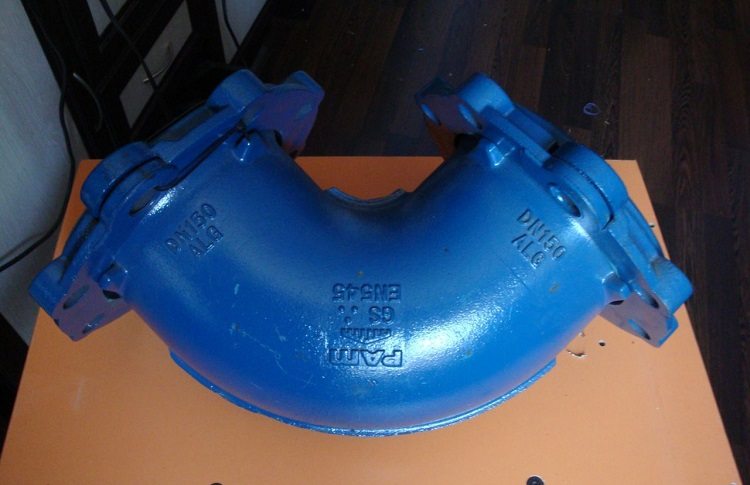
If a turn is planned in the highway, then for its implementation a knee of a suitable diameter is used
There are several varieties of this detail. There are flanged and bell-shaped knees. The installation option depends on the type of obstacle that needs to be circumvented.
Document 6942-98 defines such parameters for knees. Linear dimensions are given in centimeters.
Table 10
| Conditional pass | Distance from bend to shank | Weight without anti-corrosion coating, kg | The distance from the bend point to the socket |
| 5,0 | 13 | 2,0 | 5,7 |
| 10,0 | 15 | 4,9 | 8,5 |
| 15,0 | 18 | 7,5 | 12,5 |
The mass of the low knee according to the standard 6942-98 is 3.4 kg, the distance from the bend point to the shank is 24 cm, to the bell - 55 cm.
Bends and indents: their parameters
Bends are used to turn the pipeline during its installation. Not a single communication system can do without them. GOST allocates bends at 110 °, 120 °, 135 ° and 150 °. Their parameters are given in the table. Linear dimensions are given in centimeters.
Instrument bends-tees are made in left and right versions. Their mass according to document 6942-98 is 7 kg.
Cast iron indentation is used in non-pressure sewage networks for the removal of sewage and fecal water. It fits into the pipes due to the socket connection.
Note! Indentation has good technical and operational parameters, low cost and long service life.
Characteristics of cast iron indents according to the standard 6942-98 are given in the table. Linear dimensions are given in centimeters.
Table 11
| Conditional pass | Weight without anti-corrosion coating, kg | Bending radius | Bell length |
| 5 | 2,1 | 6,0 | 21 |
| 10 | 5,0 | 8,5 | 25 |
| 15 | 8,0 | 9,0 | 25 |
Features of cast iron tee
Cast iron tee is used to create sewer and water systems. Flanged products are widely used to separate the flow of water and gas, providing heating. The advantage of tees is the ability to independently disable threads. Structurally, they consist of three nozzles.
Standard 6942 defines such parameters for tees. Linear dimensions are given in centimeters.
Table 12
| Conditional pass: Dat/dy | 5/5 | 10/5 | 10/10 | 10 / 10D | 15/5 | 15,0/10,0 | 15,0/15,0 |
| Weight without anti-corrosion coating, kg | 2,4 | 4,2 | 6,0 | 8,3 | 6,0 | 7,5 | 10,0 |
| The distance from the main axis of the tee to the socket of the branch pipe | 4,0 | 4,0 | 7,0 | 9,5 | 4,0 | 7,0 | 9,5 |
| The distance from the axis of the branch pipe to the socket | 12,0 | 12,0 | 14,5 | 22,0 | 12,5 | 15,5 | 17,0 |
| The distance from the axis of the branch pipe to the shank | 4,0 | 6,5 | 7,0 | 15,0 | 9,0 | 9,5 | 9,5 |
The branch outlet angle is 87 ° 30 ′ with a tolerance of 1 ° 30 ′.
The weight of the low straight tee is 5.8 kg. The distance from the axis of the branch pipe to the bell is 7 cm, to the shank - 24 cm; the distance from the main axis of the tee to the socket of the allotted branch pipe is 5.5 cm.
The mass of the transitional straight tee is 6.8 kg. The distance from the axis of the branch pipe to the socket is 7 cm, to the shank - 14 cm; the distance from the main axis of the tee to the socket of the branch pipe - 7 cm.
The mass of the transitional direct low tee is 4.7 kg. The distance from the axis of the branch pipe to the socket is 5.5 cm, to the shank - 24 cm; the distance from the main axis of the tee to the socket of the allotted branch pipe is 5.5 cm.
Parameters of oblique tees are also given in standard 6942.
Characteristics of crosses
When installing communication systems, it is important to consider the branching factor of the pipes. Using a cross for these purposes allows you to save space and use the material most efficiently. Branching occurs in two planes. Document 6942 contains characteristics of crosspieces. The angle between the primary and secondary axis is 87 ° 30 ′ with a tolerance of 1 ° 30 ′.
Note! The mass of straight crosses with a displaced axis of the branch is 7.6 kg. The axis is offset by 25 mm.
Characteristics of oblique crosses at 60 ° with a tolerance of 1 ° 30 ′ are given in the table. Linear dimensions are given in centimeters.
Table 13
| Conditional pass: main / bends | 5/5 | 10/5,0 | 10/10 | 15/5 | 15/10 |
| The distance from the branch point to the bell | 6,2 | 8 | 11,0 | 9,2 | 12,2 |
| The distance from the branch point to the shank | 10,8 | 9,5 | 12,5 | 8 | 10,8 |
| The distance from the branch point to the branch pipe | 6,2 | 9 | 11,0 | 12,0 | 13,5 |
| Weight without anti-corrosion coating, kg | 3,0 | 5,8 | 5,8 | 7,0 | 10,0 |
Characteristics of oblique crosses at 45 ° with a tolerance of 1 ° 30 ′ are given in the table. Linear dimensions are given in centimeters.
Table 14
| Conditional pass: main / bends | 5/5 | 10/5,0 | 10/10 | 15/5 | 15/10 |
| The distance from the branch point to the bell | 9,0 | 11,5 | 15 | 14,0 | 18,0 |
| The distance from the branch point to the shank | 10 | 7,5 | 11 | 8,5 | 8,5 |
| The distance from the branch point to the branch pipe | 9,0 | 12,5 | 15 | 16,0 | 18,8 |
| Weight without anti-corrosion coating, kg | 4,0 | 6,9 | 10,5 | 7,3 | 10,5 |
Two-plane crosses according to GOST 6942 are in left and right execution.
Couplings and other elements of standard 6942 and their parameters
If damage occurs to a small section of the pipeline (not more than three meters), it is impractical to completely change the pipe or cut it. In this case, it is better to continue the train with a new segment. When performing repair work on an existing pipeline, a sliding sleeve is used.
Since it does not have internal partitions, there is the possibility of its movement around the product. This shortens the repair time and also speeds up the commissioning of communications. Sliding sleeve is applicable when mounting shaped elements in the pipeline structure.
Coupling parameters according to GOST 6942 are given in the table.
Table 15
| Conditional pass in cm | Weight without anti-corrosion coating, kg |
| 5 | 1,3 |
| 10 | 2,7 |
| 15 | 5,0 |
Sliding couplings have the parameters presented in the table. Linear dimensions are given in centimeters.
Table 16
| Conditional pass | Distance between sockets | Weight kg |
| 5 | 8 | 1,8 |
| 10 | 10 | 3,8 |
| 15 | 12 | 6,2 |
A cast-iron plug is used to cut off part of the pipeline in the event of a malfunction or termination of further use. With its help, you can block the flow of water or other working medium. The plug is a circle with several holes for securing. The choice of the necessary product is made taking into account the diameter of the pipe, material and working pressure. For cast iron pipes, rubber plugs can also be used.
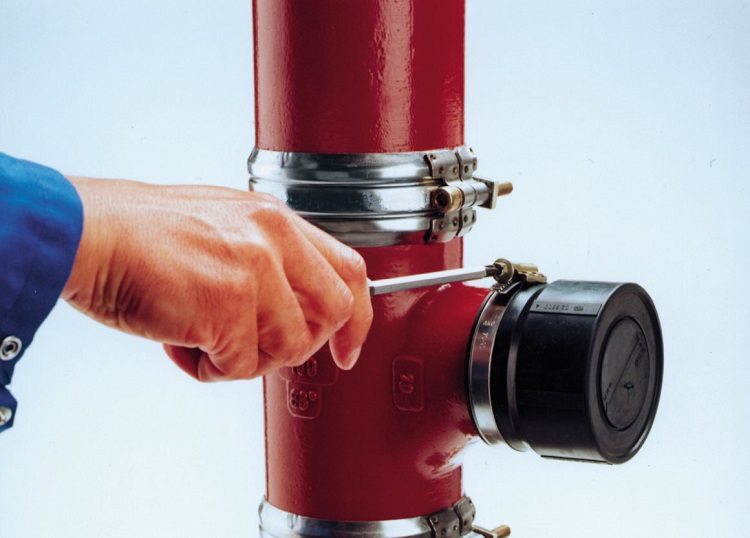
If a branching of the sewage system is planned in the future, then it makes sense to immediately install a tee and close the temporary unused hole with a plug
The revisions provide access to the sewage pipeline for cleaning. The design of the cast iron revision is bell-shaped. The main difference is in diameter and dimensions.
Thus, according to GOST 6942-98, a cast-iron sewer pipe is the most reliable and durable for drainage systems. The advantages and relevance of their use is determined by resistance to various hydraulic pressures, temperature extremes, loads and environmental safety.
